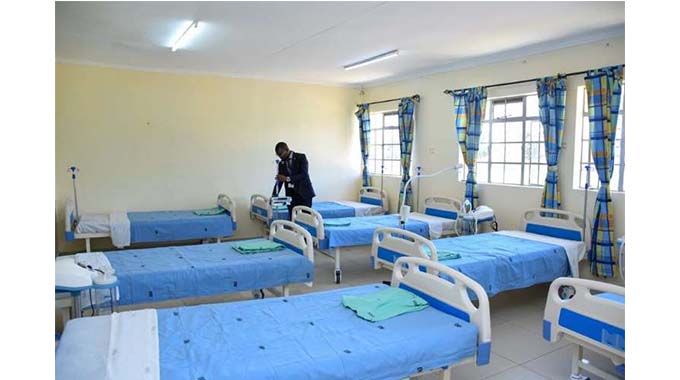Zimbabwe targets US$8bn industrial and commercial sector

Business Editor
ZIMBABWE has set a target of achieving a US$8 billion Industrial and Commercial Sector by 2023 with Cabinet approving the ambitious roadmap on Tuesday.
Developing a robust industrial and commercial sector is vital to import substitution and a key component of the Government’s vision of creating an upper middle-income economy by 2030.
The growth of the industrial and commercial sector would be boosted by a number of investments scheduled for implementation under the roadmap, since it is private-public-sector-led.
These include 23 planned investments amounting to US$545 million in the food, drink and tobacco sub-sectors; US$32 million investments in the textiles, clothing and leather sub-sectors; and a total of eight projects with an investment value of US$1.5 billion in the metals and electricals sub-sectors.
The Minister of Higher and Tertiary Education, Innovation, Science and Technology Development, Professor Amon Murwira, presented the roadmap during this week’s Cabinet meeting in his capacity as chair of the combined Cabinet Committee on innovation, technology development and application and committee on industrial and export development.
“Cabinet considered and approved the Roadmap to a US$8 billion Industrial and Commercial Sector by 2023,” said Environment, Climate, Tourism and Hospitality Minister, Mangaliso Ndlovu, in a post-Cabinet media briefing.
“The Roadmap outlines the plan to raise the manufacturing and commercial sector contribution to GDP from the current US$7,16 billion to US$8,03 billion by 2023, through the sector’s diversified 94 sub-sectors. In the interim, the sector contribution to GDP is projected to grow to US$7,4 billion in 2021 and US$7,7 billion in 2022.”
The minister said investment and growth in the manufacturing and commercial sector would be spurred by the milestones being registered by the country on the Ease of Doing Business reforms side as well the implementation of the Special Economic Zones and the One Stop Shop concept.
Moreover, Ndlovu said the country was already implementing the Sadc Industrialisation Strategy and Roadmap (2015-2063) and the Comesa Industrialisation Strategy (2017-2025), which strategies are anchored on value chain development and beneficiation. The National Development Strategy 1 (NDS-1) 2021-2025, the Zimbabwe National Industrial Development Policy (2019-2023) as well as the Local Content Strategy will also buttress the Roadmap.
“The Industrial Development Corporation of Zimbabwe (IDCZ) will play a pivotal role in the achievement of the Roadmap through availing loan capital to bankable greenfield and brownfield industrial projects.
“Other finer details of the milestones to be achieved in each of the years of implementation will be availed annually,” said Ndlovu.
The devolution agenda and the Community Share Ownership Trusts (CSOTs) are expected to continue being used as vehicles for accelerated rural industrialisation in general, said Ndlovu.
He added that emphasis will be given to corporate social responsibility in order to ensure that the Community Share Ownership Trusts are funded and operational.
Meanwhile, the commercial sector is expected to grow into a US$5,2 billion sector compared to the current US$4,1 billion, on the backdrop of increased branch networks by the major wholesale and retail outlets.
“In order to enhance productivity, key enablers shall be put in place, including the following: provision of water supply and the relevant infrastructure; and investment in the development and manufacture of information communication technology products,” said Ndlovu.
He called upon the financial services sector and other domestic investors to mobilise and avail the required investment capital to support the Roadmap and other development programmes.












Comments